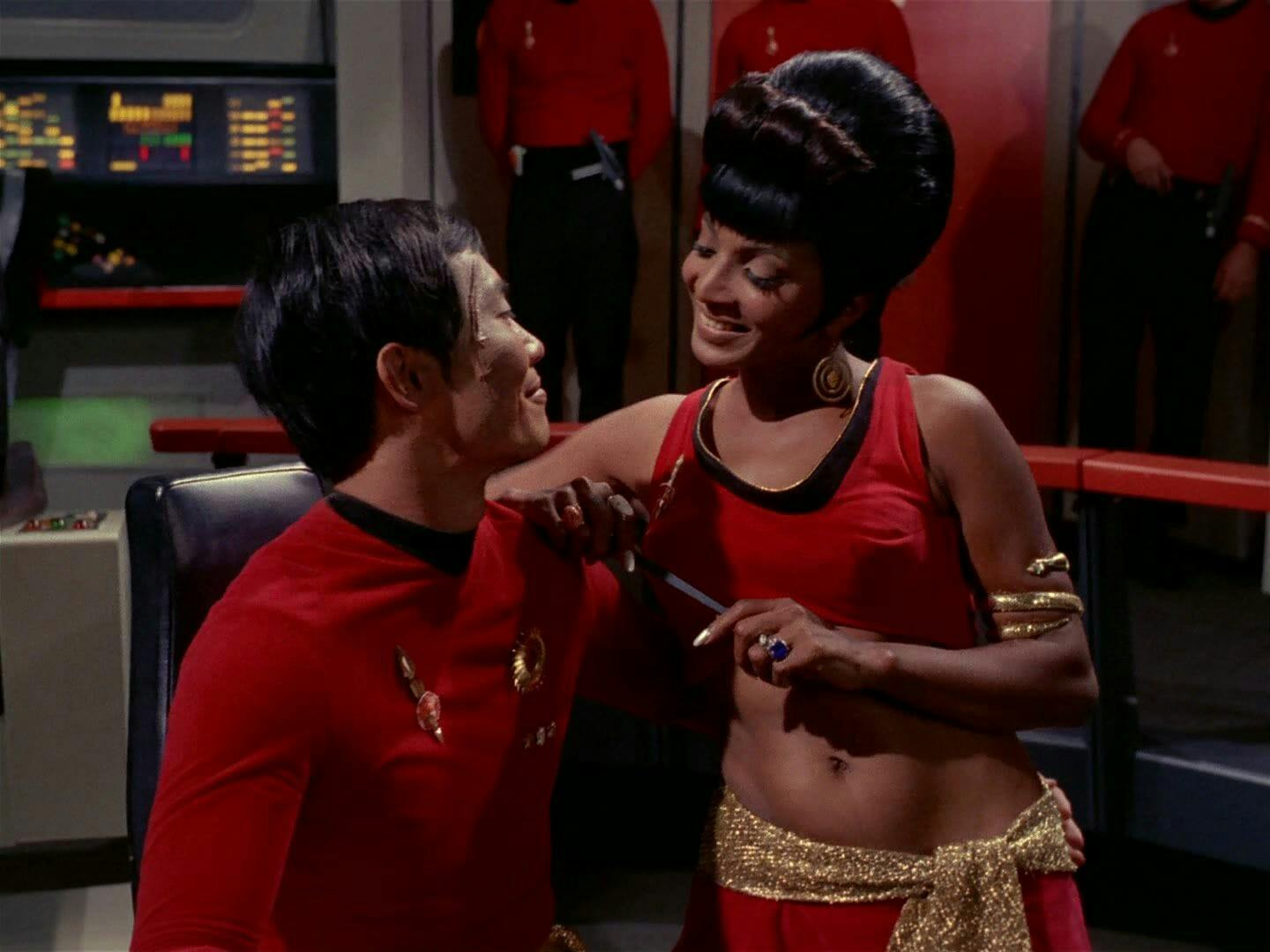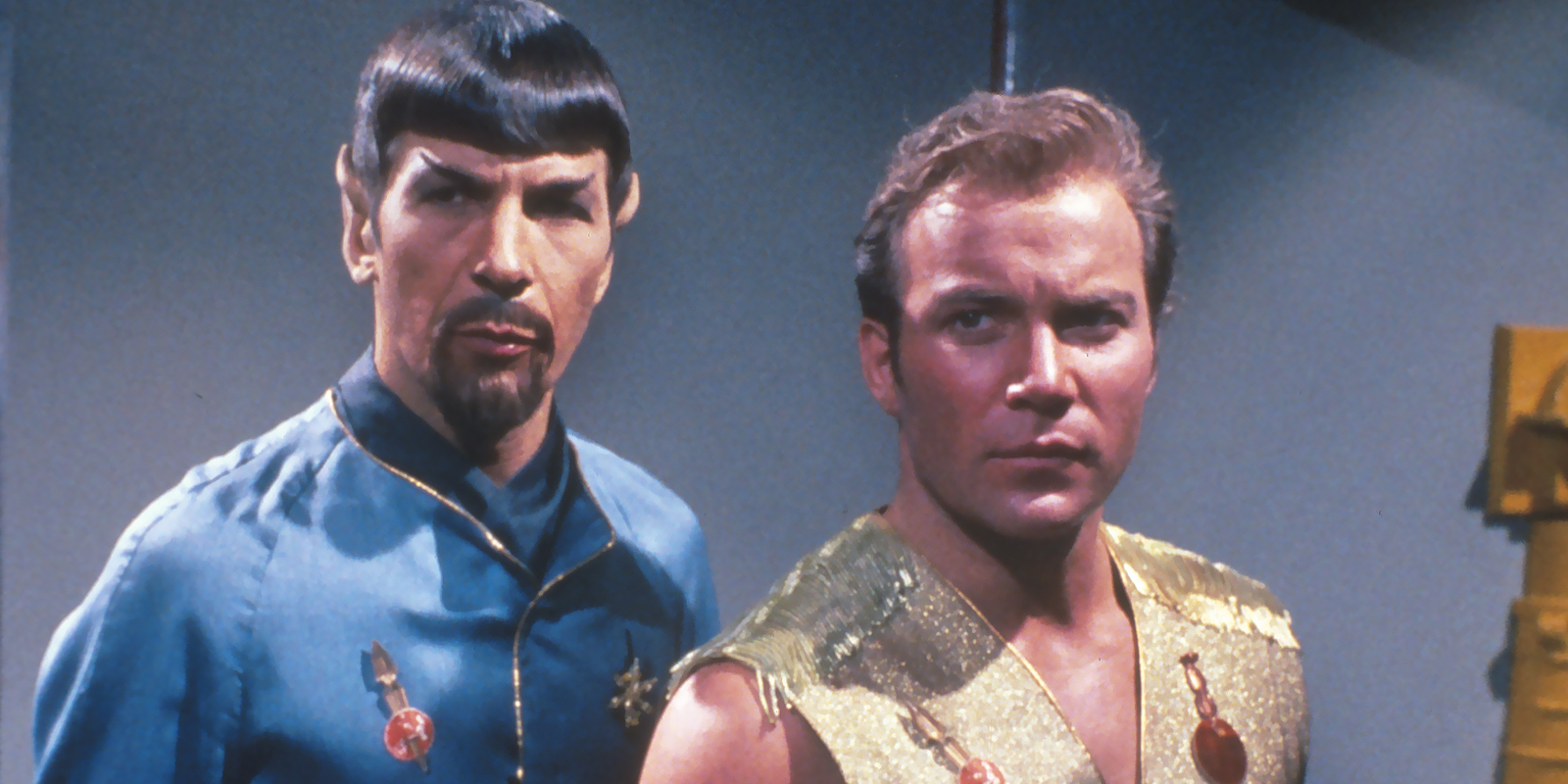Star Trek: Discovery returns Sunday, concluding last year’s enigmatic mid-season cliffhanger. The U.S.S. Discovery ended the episode in an unknown region of space, with many fans speculating that it’s actually in a parallel universe. Earlier episodes laid the groundwork for interdimensional travel, and the most popular guess is a visit to the Mirror Universe.
This alternate universe has a long history in the Star Trek franchise, and while you don’t need to know the backstory to follow Discovery, now is a great time to catch up with the relevant episodes. Even if the Mirror Universe doesn’t show up this week, Discovery‘s creators have confirmed it has a role in the series. Here’s a guide to its appearance in previous Star Trek shows, all of which are available on Netflix and CBS All Access.
Star Trek: The Original Series, “Mirror, Mirror”
This episode provided the origin for the so-called “Mirror Universe,” which doesn’t actually get named onscreen. It also inspired the “evil twins have goatee beards” meme, which you may recognize if you watched the genre-savvy sitcom Community.
In this standalone story, four Enterprise crewmembers wind up in an alternate version of their ship, swapped with their “evil” doppelgangers: Captain Kirk, Dr. McCoy, Lt. Uhura, and engineer Mr. Scott. We immediately know something’s wrong because everyone’s wearing spangly uniforms and Spock has a devilish little beard.

In this universe, Starfleet is a warlike organization led by bloodthirsty tyrants, and officers rise through the ranks through betrayal and assassination. Kirk’s counterpart is ruthless and unpleasant man, making it hard for the real Kirk to impersonate him without being discovered. This episode is easily one of the best of the Original Series, and if you’re pressed for time, it’s the one you should watch as your intro to the Mirror Universe.
Star Trek: Deep Space Nine
DS9 aired five Mirror Universe episodes: “Crossover” (season 2), “Through the Looking Glass” (season 3), “Shattered Mirror” (season 4), “Resurrection” (season 6), and “The Emperor’s New Cloak” (season 7).
As we’ve mentioned before, DS9 is a lot more serialized than other Star Trek shows. That leads to a good news/bad news situation for our Mirror Universe episodes because while DS9 allows for more longterm worldbuilding between episodes, they’re harder to follow as standalone stories. We recommend sticking with the first three.
DS9’s Mirror Universe has a special twist for Captain Sisko, whose wife died before the beginning of the series. Her Mirror Universe counterpart is still alive, so these episodes often involve family drama between Sisko, his wife, and their teenage son Jake. However, the most popular highlight is probably Major Kira’s evil twin, who is prone to wearing severe black catsuits and flirting with her own double. (Buffy the Vampire Slayer had a similar idea a few years later, with its “sexy goth Willow” episode. Great minds think alike!)
https://www.youtube.com/watch?v=yy3XSm6XxLA
Star Trek: Enterprise, “In a Mirror, Darkly”
This two-parter is generally regarded as one of the best in Enterprise‘s run—though itself is generally regarded to be the worst Star Trek series. So, make of that what you will. A Mirror Universe storyline gave the show a break from its usual formula and added some canon backstory to what was previously just a fun excuse to have characters fight and/or make out with their evil doppelgangers.
“In a Mirror, Darkly” takes place 100 years before “Mirror, Mirror,” tying into another TOS episode, “The Tholian Web.” (Don’t worry, you don’t need to watch it.) If you’re into worldbuilding and political backstory, “In a Mirror, Darkly” is a smart choice to watch before Discovery. Enterprise‘s writers enjoyed creating rational explanations for some of the wackier aspects of Star Trek canon, and this two-parter is simultaneously a dramatic adventure story and a thoughtful look at how the Mirror Universe’s version of Starfleet actually works.
Bonus: The Mirror Broken comics
The Next Generation never got a Mirror Universe episode, so this six-part miniseries explores what might have happened. Published in 2017, it takes place at roughly the same time as the DS9 episodes, exploring that point in the Star Trek chronology with the Mirror Universe counterparts of Picard and his crew. Star Trek comics aren’t considered canon in the same way as official Star Wars comics, but if you like the sound of a muscular Picard with a pointy goatee, this miniseries is here for you.


